Following my October 2014 blog post asking for assistance in realising my dream of a very specific doublenecked guitar and bass, Antony Moggridge of Shonky Musical Instruments took up the challenge to build this beast for me. Above you can see his initial draft design following an exchange of emails in which I made clear exactly what I wanted.
My main specifications were for a doubleneck guitar and bass with the bass neck below the guitar neck; I wanted a compact body so as to keep the sheer bulk of instrument to a minimum; and I wanted the controls to be simple and uncluttered with NO switches on the upper bout or upper horn of the guitar, and no switches on the body in the area between necks - all switches HAD to be down the bottom at the rear of the instrument.
Together we hit upon the idea of using concentric pots for the volume and tone of each neck so as to save space and keep the control layout very simple. I also suggested that perhaps the design could be slightly Jazzmaster-like as opposed to taking its visual cues from the usual suspects (SG, Les Paul, Strat, Tele, P-Bass, etc).
Below you see the OSB mock-up body with bridges and necks positioned to give a better idea of what the final guitar will look like.
Antony re-shaped the headstocks to his own preferred Shonky style, which I agree is quite elegant. Note that in order to do so, he had to glue an extra piece of maple to the guitar headstock which had been quite brutally trimmed to vaguely resemble a 1960s-era Vox headstock.
In the next few pictures we see the shaping, contouring and routing carried out on the centre-joined two-piece reclaimed sapele body.
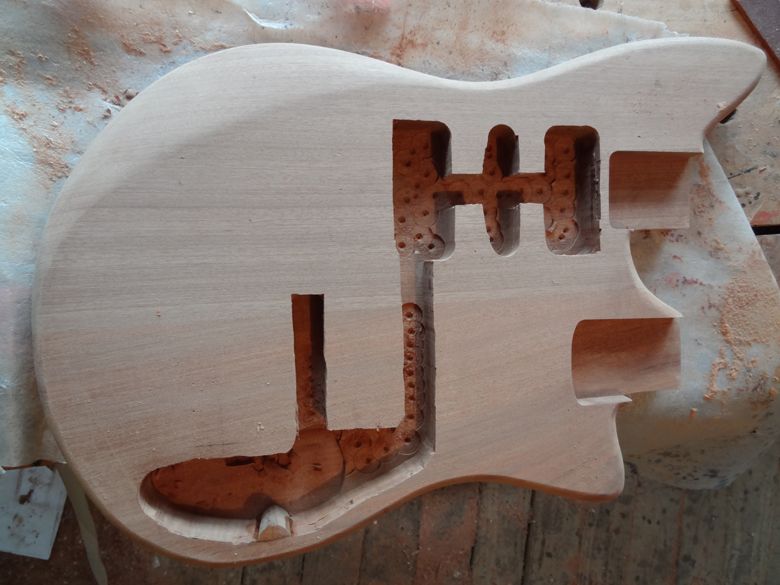
The next photo Antony sent to me to illustrate the size of the body. You can see that it's not a lot larger in size than the Strat body laid on top of it.
Antony initially applied a hand-rubbed stain (we wanted a natural finish as it seemed a shame to cover up the natural grain of the sapele), and then sprayed the body to accomplish a tobacco sunburst.
Here we see the perspex scratchplate (pickguard) template...
...and here is the scratchplate itself cut from some rather interesting snakeskin-effect scratchplate material that Antony had sourced. The scratchplate and bridges have been positioned on the body so as to get the general effect of how it will eventually appear.
Getting there... Hardware installed.
Necks bolted on.
The wiring was quite interesting as we have three pickups, volume, tone and 5-way selector switch on the guitar side; two pickups, volume, tone and 3-way selector switch on the bass side; and two mini-toggle on/off switches, one for each neck. Output is via a stereo jack socket to be used in conjunction with a split "Y" cable so as to send guitar and bass signals to separate effects and amps.
And all strung up and ready to go...
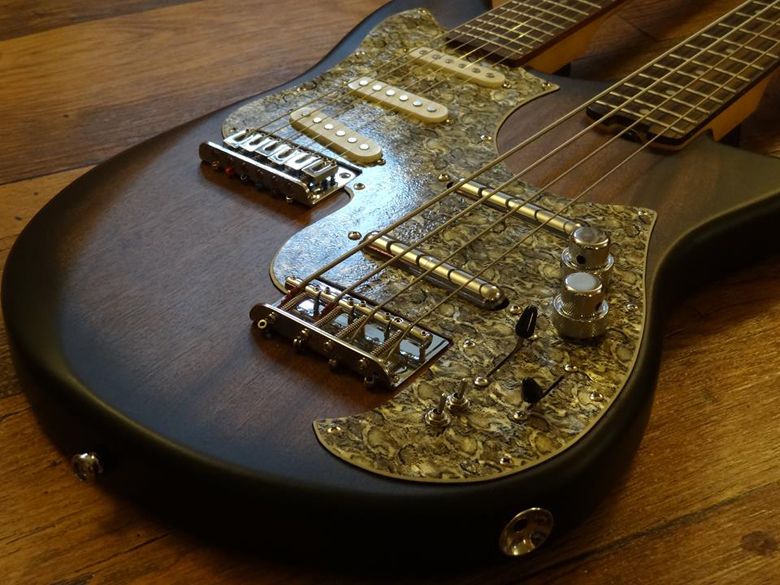
The finished item!
I've been playing this guitar/bass daily since I received it a week ago. (Antony actually finished building it in December, but we decided not to send it until after the madness of the Christmas posting period was over and done with). I am exceedingly pleased with it and believe that between us Antony and I have come up with a fantastic design for a doubleneck. OK, so it IS heavy at about 14lbs, but the body is nicely compact, playing the bass neck feels very natural and it is not a problem having to reach over the guitar side. The control layout is sensible and easy to use, and there are no switches in silly places where I might hit them accidentally whilst playing. Moreover, I find that it actually balances well on a strap and does not suffer from neck dive - a common complaint with doublenecks.
Antony said that in retrospect he could have made it a little lighter be removing more wood from beneath the scratchplate, and perhaps making the body shorter so that there wasn't so much wood beyond the bass bridge. But then I have to ask, would it have hung so nicely on a strap? Might that have made it neck heavy.
I played this at rehearsal with my band Spurious Transients at the weekend and it coped admirably. I've also been experimenting using the doubleneck in conjunction with the new Boss RC-1 Loop Station (the uncomplicated one!) and the results are very promising indeed.
I'm going to be playing some Spurious Transients gigs later in the year (including at this Festival of Psychedelia - hey, you can't get more prog rock than a doubleneck) and will be using this baby so I can switch between guitar and bass on the same songs.
Huge thanks to Antony (who gives his own account of the build here).
G L Wilson
© 2015, Guitarz - The Original Guitar Blog - the blog that goes all the way to 11!
Please read our photo and content policy.


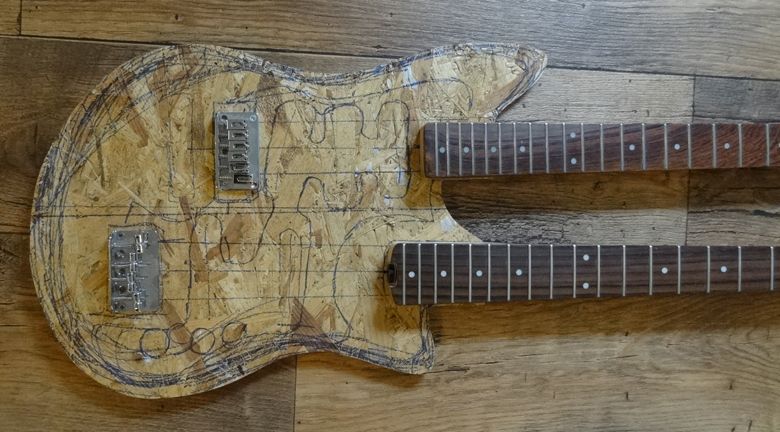
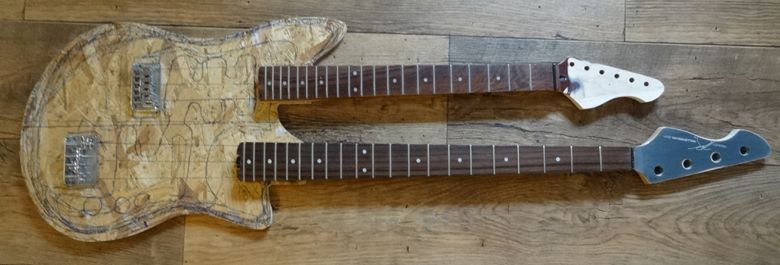
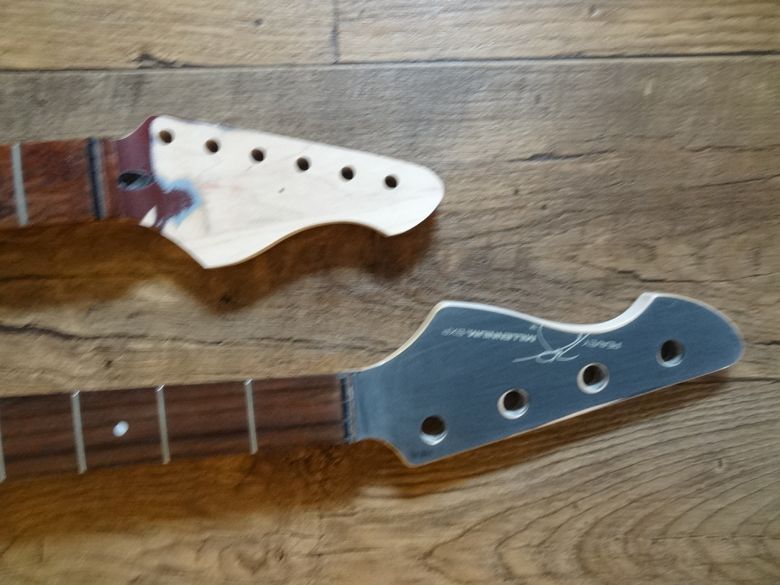
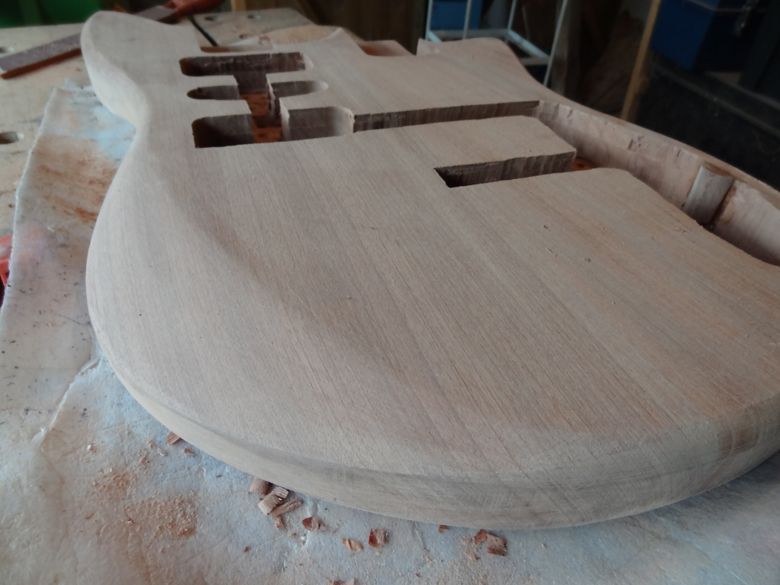

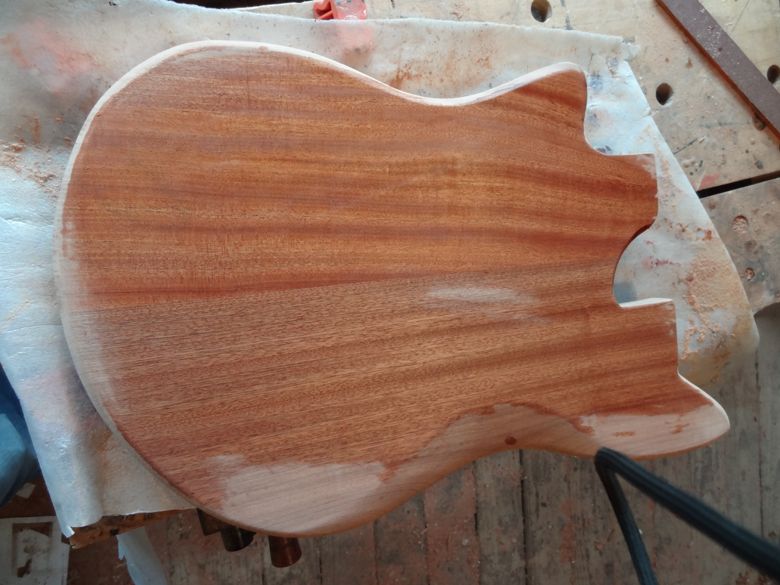
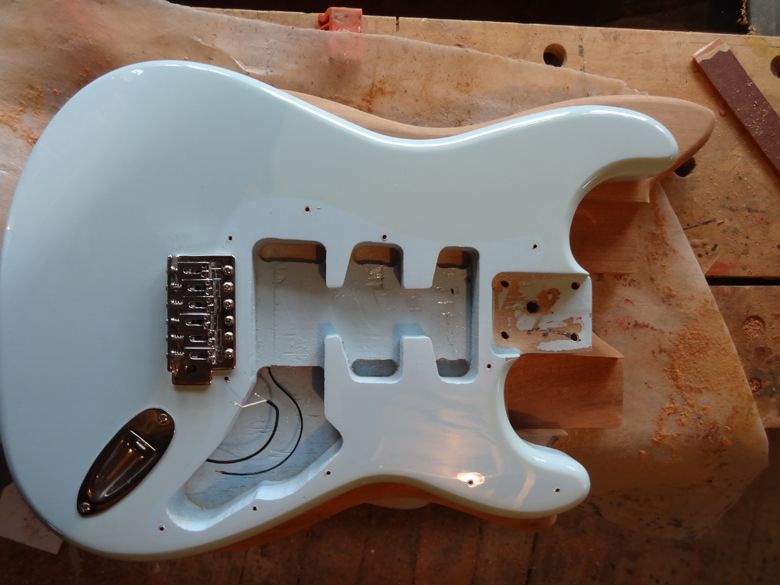


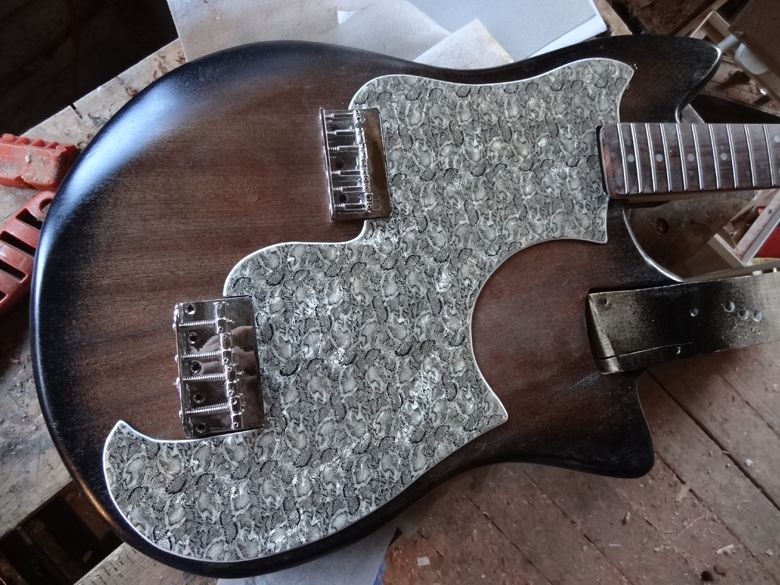
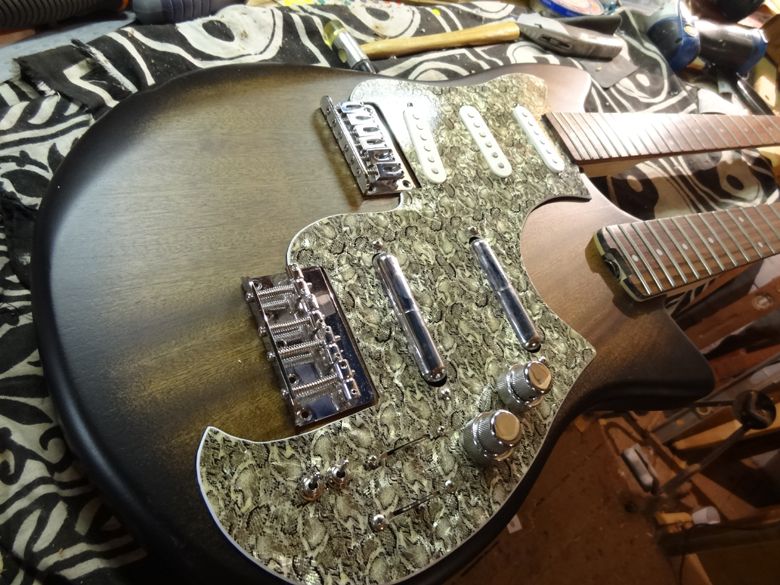
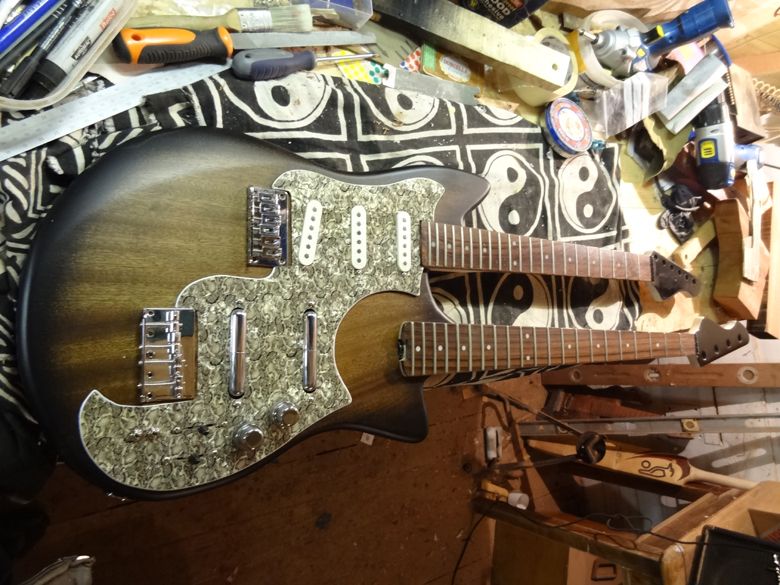
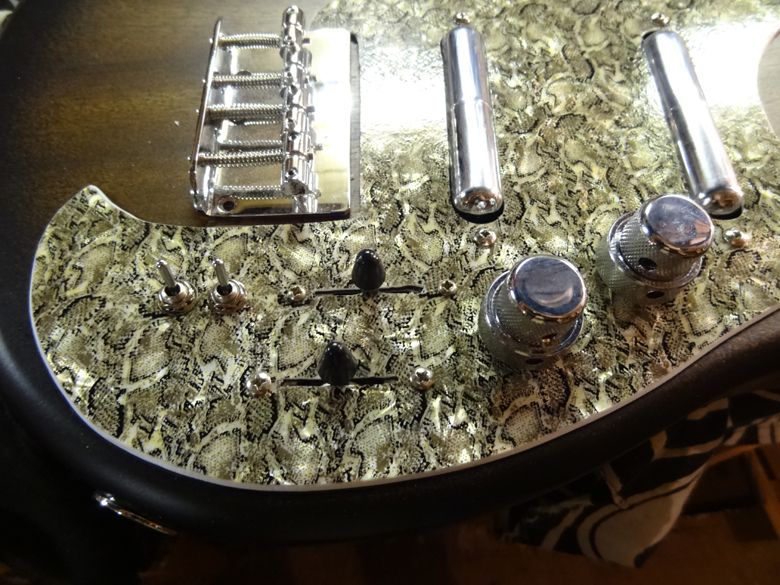
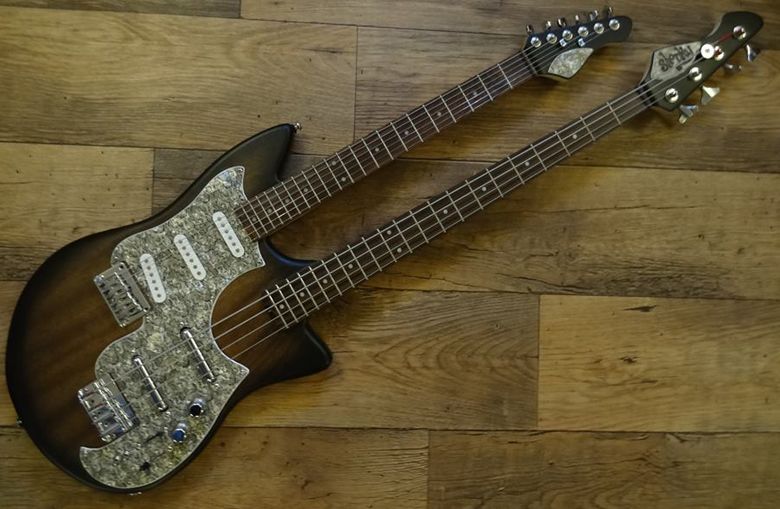
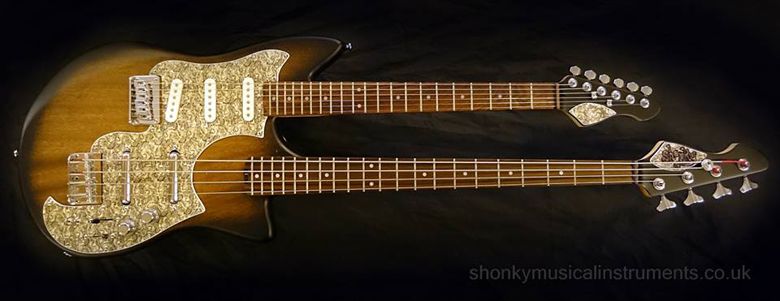
Congratulations on a very unique, attractive, compact, and pragmatic design. I'm feeling a wee bit of envy.
ReplyDeleteThis is great! The finish looks really cool and lipstick pickups are my fav also. Details like headstock 'pickguard' make this guitar pretty nifty - im planning double neck for a long time also, thou with shortscale bass on top - and as buck said, a wee bit of envy here too, which is always great to hear, eh? ;)
ReplyDeleteWow - excellent result. Looks terrific
ReplyDelete